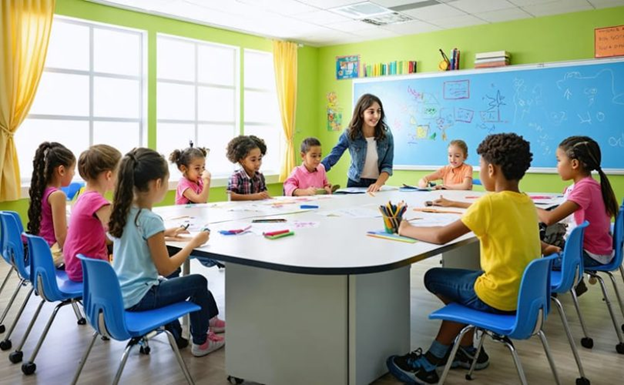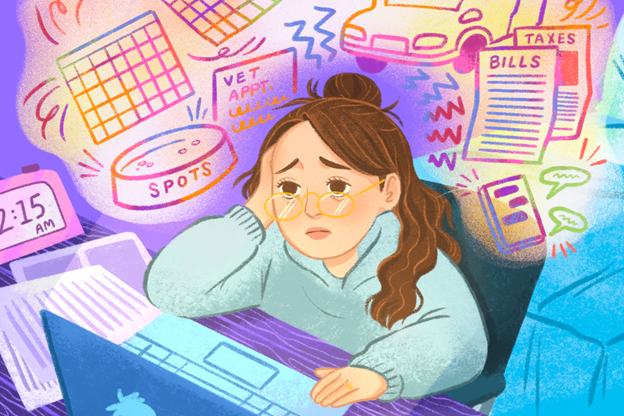Every child learns differently—and for students with ADHD, traditional classroom settings often come with challenges that interfere with their true potential.

Noise, distractions, rigid schedules, and limited flexibility can make it difficult for them to stay focused or engaged. But education doesn’t have to be one-size-fits-all. That’s where a thoughtfully designed online learning environment can make a real difference.
Understanding the Needs of Students with ADHD

Attention Deficit Hyperactivity Disorder (ADHD) impacts attention span, impulse control, and executive functioning. Students with ADHD often struggle with:
- Sustaining attention during lectures
- Managing transitions between tasks
- Filtering out distractions
- Sitting still for extended periods
- Staying organized and meeting deadlines
These aren’t signs of laziness or a lack of intelligence—many students with ADHD are highly creative, intuitive, and quick-thinking. But they need the right structure to thrive.
Why Online Schooling Works
A flexible, well-supported online education can empower students with ADHD in ways a traditional classroom often cannot. We don’t expect students to mold themselves to the system—we build the system to support how they learn best.
Here’s how online school unlocks real benefits for students with ADHD:
1. Personalized Pacing and Schedule Flexibility

ADHD doesn’t run on a bell schedule. Online learning allows students to:
- Move at their own pace
- Take breaks when they need to reset
- Work during their optimal focus hours (for many, that’s not 8 a.m.)
Our K–12 Virtual Academy and Dyslexia Scholars Academy provide flexible structures that adapt to each student’s rhythm—without compromising academic rigour.
2. Fewer Distractions, More Focus

Busy hallways, crowded classrooms, and sensory overload make it hard for students with ADHD to concentrate. Learning from home gives students:
- A quieter, more controlled environment
- The ability to customize their workspace
- Fewer interruptions from peers
We encourage families to create learning spaces that reflect their students’ needs—whether that’s soft lighting, movement breaks, or sensory tools nearby.
3. Real-Time Instruction, Not Asynchronous Chaos

Many online programs are self-guided and leave students to figure it all out alone. That’s not how we operate.
Classes are live and interactive. Students join real-time instruction with passionate, experienced teachers who understand ADHD and other exceptionalities.
This live format ensures students:
- Receive immediate feedback
- Engage in class discussions
- Stay accountable and connected
We believe connection is key. Every student deserves to feel seen, heard, and supported.
4. Built-In Breaks for Movement and Rest

Students with ADHD often benefit from movement to regulate their attention. Online learning allows for:
- Short breaks between tasks
- Movement activities without disruption
- Standing desks, exercise balls, or even pacing during lessons
There’s no stigma for moving your body while you learn here. We respect neurodivergent needs as human needs—not disruptions.
5. Customized Learning Paths

Autonomy is powerful for kids with ADHD. Each day should include a “choice block” where students can pick:
- A passion project
- Creative writing
- Independent reading
- Building something STEM-related
- Exploring a new hobby or concept
These blocks not only help students self-regulate but also teach valuable decision-making skills.
Self-directed time should be an intentional part of every schedule to encourage students to explore their interests and take ownership of their learning path.
6. Supportive, Trained Educators

Our staff doesn’t just accommodate ADHD—they understand it. They:
- Receive training in teaching neurodivergent learners
- Know how to scaffold executive functioning skills
- Build trust with students through consistency and care
From time management coaching to tools for focus and emotional regulation, we’re with your child every step of the way.
7. Emphasis on Strengths, Not Just Struggles

We see more than a diagnosis. We see:
- Innovators
- Artists
- Inventors
- Entrepreneurs
Students with ADHD often excel in big-picture thinking, storytelling, problem-solving, and innovation. Our programs are designed to foster those strengths.
We don’t just teach to fill gaps—we teach to light fires.
8. Social Opportunities That Fit Their Comfort Zone

One of the biggest myths about online school is that students are isolated. That’s not the case.
We offer:
- Small group classes
- Collaborative projects
- Peer connections in virtual clubs and events
- Optional in-person meetups (when geographically feasible)
For students who struggle in noisy or overwhelming social settings, this controlled social engagement is a game-changer.
9. Parent Partnership and Visibility

In a traditional school, parents often feel left in the dark. With online learning, you get a front-row seat to your child’s education.
We keep families involved through:
- Transparent communication
- Learning dashboards
- Regular check-ins with teachers and advisors
You’re not just watching—you’re part of the team.
10. Whole-Child Approach

We don’t reduce students to their grades. We believe in:
- Social-emotional learning
- Growth mindset development
- Mental health awareness
- Encouraging joy in learning
Our mission is to help students thrive—academically, emotionally, and personally.
Built for Students Like Yours
Whether your child is newly diagnosed or has been navigating ADHD for years, we invite you to discover what learning can look like when it’s done right.
At Scholars Academy, students with ADHD are not “handled”—they’re empowered.
If you’re ready to see your child thrive in a space where their differences are celebrated, not silenced—we’re here.
